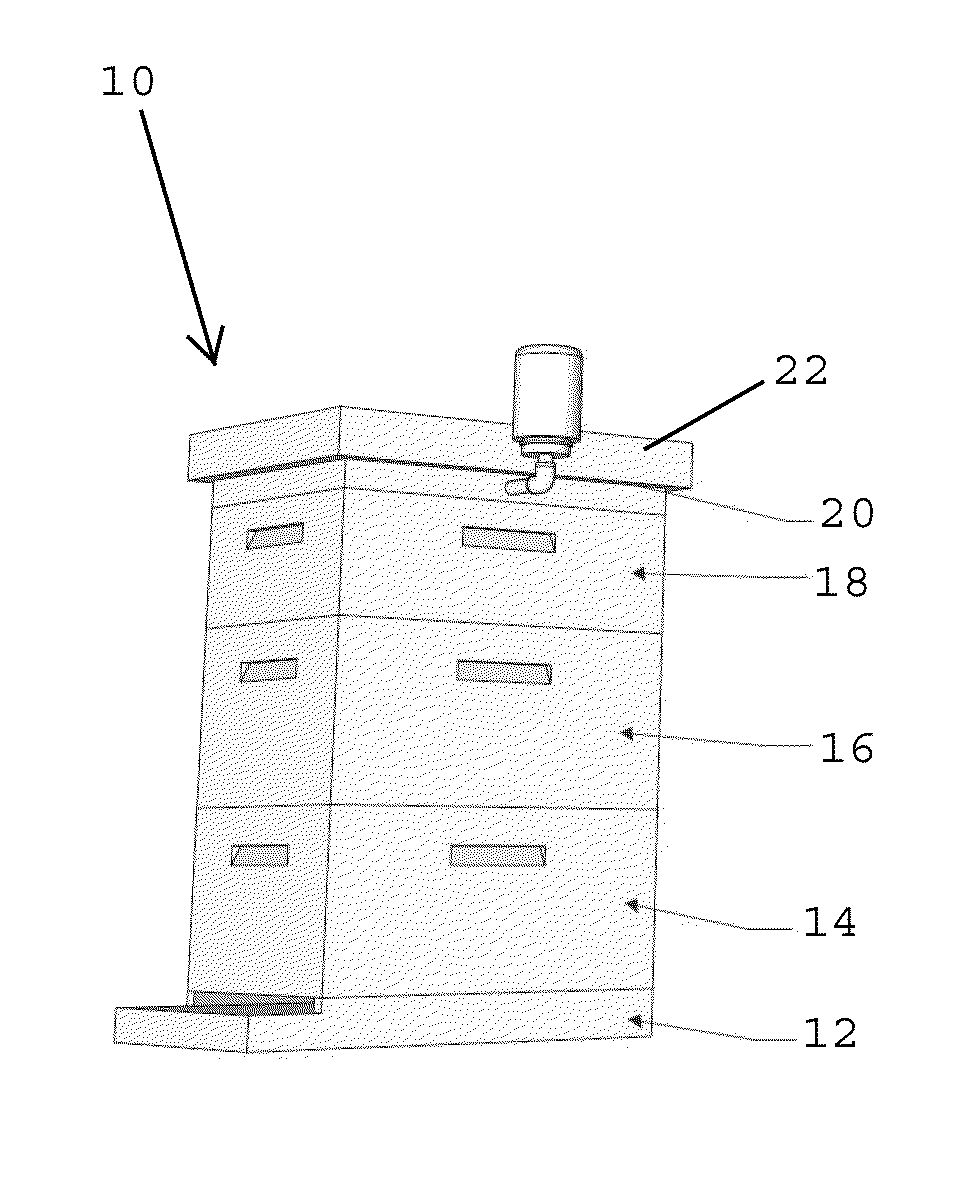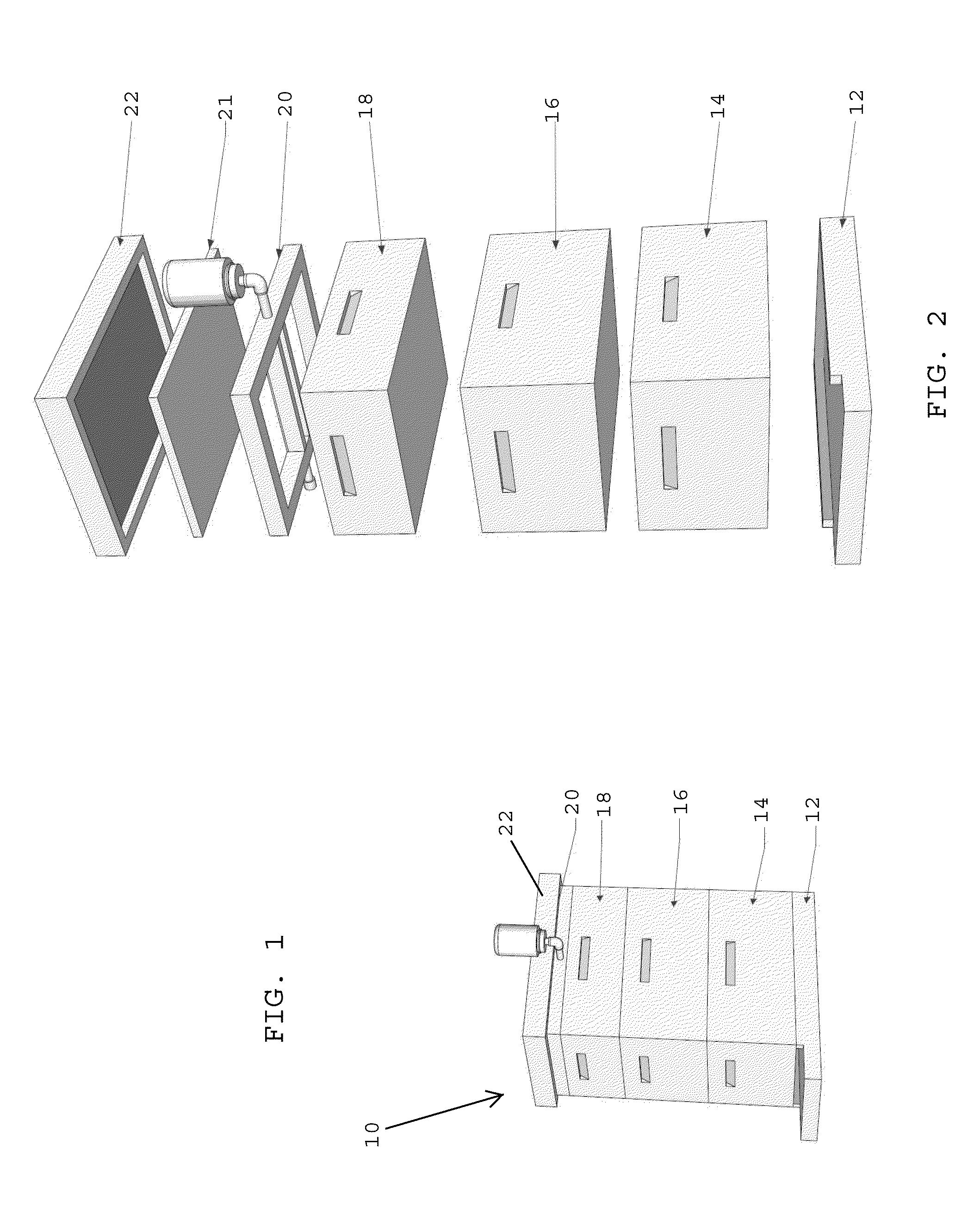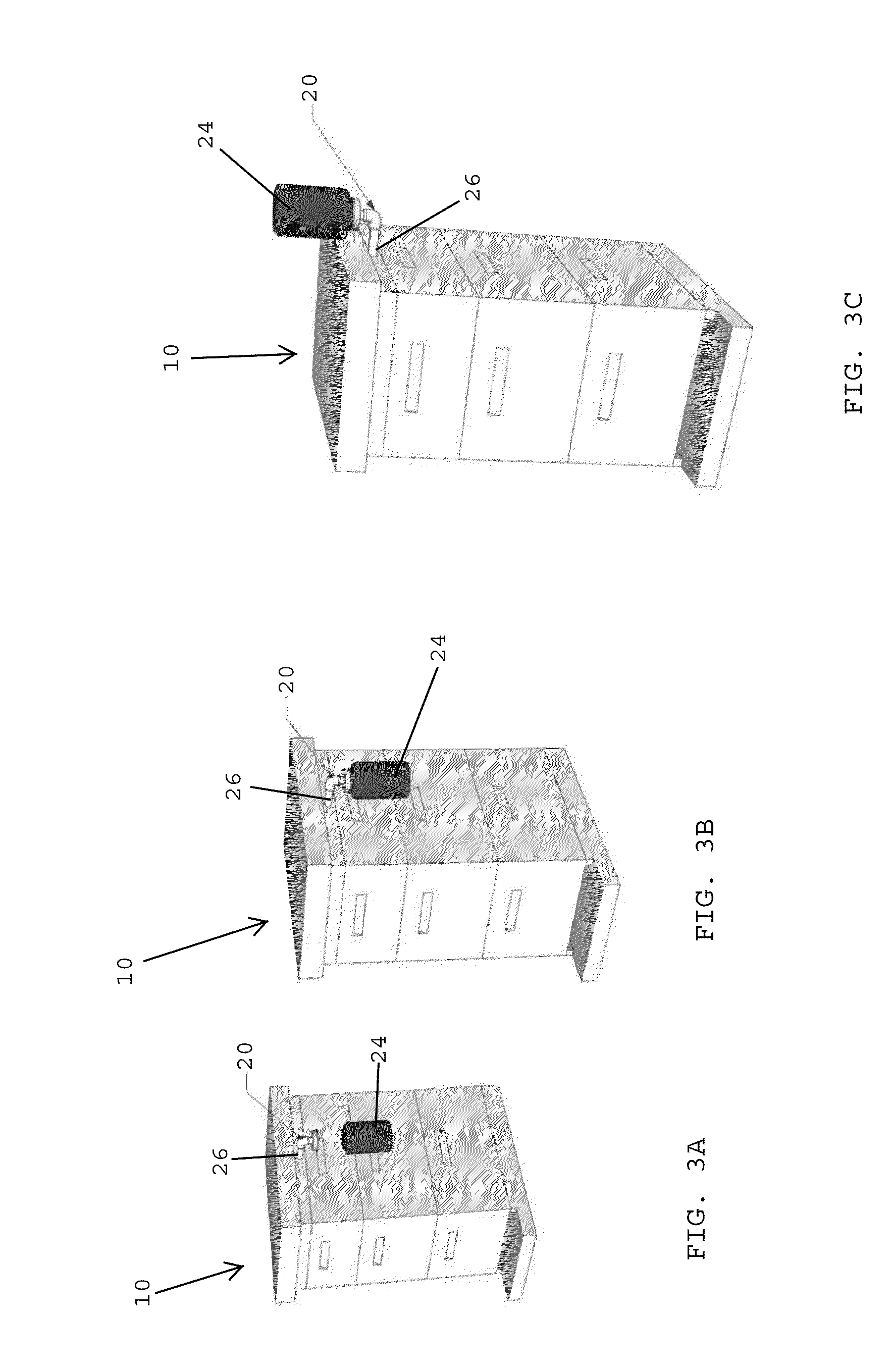Bee feeders and bee feeding systems for bee colonies
a technology for bee colonies and feeders, applied in the field of bees, can solve the problems of cumbersome beekeepers, affecting the house, and most models drowning bees or drenching bees
- Summary
- Abstract
- Description
- Claims
- Application Information
AI Technical Summary
Benefits of technology
Problems solved by technology
Method used
Image
Examples
Embodiment Construction
[0049]In one embodiment of the present invention, a bee feeder provides significant improvements over conventional bee feeder designs because it blends the best features of both internal and external feeding systems. Although the present invention is not limited by any particular theory of operation, it is believed that a superior bee feeder design is provided because the feed reservoir is located outside the hive, but the feeding of the bees takes place deep inside the hive.
[0050]In one embodiment, the bee feeder allows bees the same easy access to syrup inside the hive as an internal feeder, but because the feed reservoir is located outside the hive, it provides the beekeeper direct access to the feeder as well—a convenience previously found only in external feeder designs.
[0051]In one embodiment, a perforated pipe runs through and is held in place by a 2″ spacer / stage that deploys the feed inside the hive. This innovative design allows the feeder to be slipped in between two hive...
PUM
 Login to View More
Login to View More Abstract
Description
Claims
Application Information
 Login to View More
Login to View More - R&D
- Intellectual Property
- Life Sciences
- Materials
- Tech Scout
- Unparalleled Data Quality
- Higher Quality Content
- 60% Fewer Hallucinations
Browse by: Latest US Patents, China's latest patents, Technical Efficacy Thesaurus, Application Domain, Technology Topic, Popular Technical Reports.
© 2025 PatSnap. All rights reserved.Legal|Privacy policy|Modern Slavery Act Transparency Statement|Sitemap|About US| Contact US: help@patsnap.com



